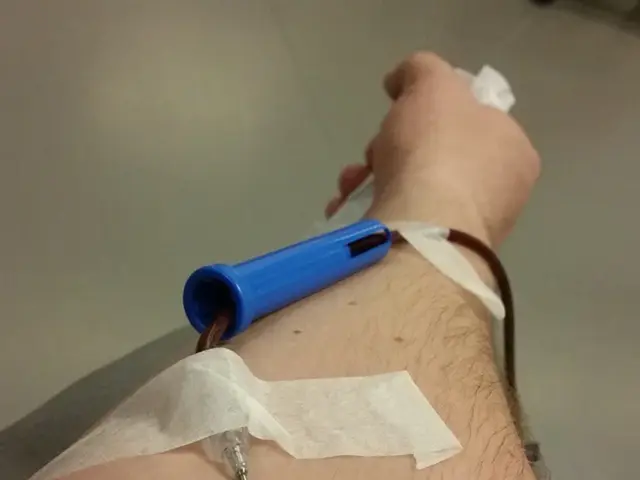Innovation in medical technology: An implantable device designed to safeguard diabetes patients from potentially life-threatening drops in blood sugar levels.
Researchers at MIT have developed a groundbreaking device that could revolutionize the treatment of emergency hypoglycemia in Type 1 diabetes patients. The device, a 3D-printed, coin-sized implant, contains powdered glucagon in a sealed reservoir and uses a nickel-titanium shape-memory alloy seal for long-term stability and on-demand release.
The implant, which is about the size of a quarter, can carry either one or four doses of glucagon, in addition to epinephrine. It is implantable under the skin and is ready to act if the patient's blood sugar drops too low.
The powdered glucagon formulation was chosen over liquid to ensure stability over extended periods without degradation. This allows the implant to hold its glucagon dose for a long time. The implant can be manually triggered or linked to continuous glucose monitors (CGMs) to release glucagon automatically if blood sugar drops below a set threshold.
In animal testing on diabetic mice, the glucagon release restored blood glucose levels within minutes and prevented hypoglycemia effectively. The implants remained functional for up to four weeks in vivo and continued operating despite fibrotic tissue formation, a common immune response to implants. The research team is working on extending the functional lifespan to at least one year to provide long-term protection before replacement is required.
The technology was also tested with epinephrine as a proof of concept, demonstrating the capability to release other emergency medications rapidly. This work represents a significant step toward a reliable, minimally invasive, implantable emergency glucagon delivery system for managing acute hypoglycemia in Type 1 diabetes. It complements advances in continuous glucose monitoring and artificial pancreas technologies by providing a rapid and stable glucagon source without the instability issues of liquid glucagon formulations.
Robert Langer, the David H. Koch Institute Professor at MIT, is an author of the paper and expressed excitement about the potential impact of the device on diabetic patients and beyond. The research was led by Siddharth Krishnan, a former MIT research scientist who is now an assistant professor of electrical engineering at Stanford University.
The device's reservoir is made of a 3D-printed polymer and is sealed with a special material known as a shape-memory alloy. The shape-memory alloy is programmed to change its shape when heated, in this case, curling from a flat slab into a U-shape when heated to 40 degrees Celsius. The device can be wirelessly triggered to release its contents, potentially by a glucose monitor.
Hypoglycemia can be difficult to detect, especially in children and during sleep. The device can be triggered either by the person using it or automatically by a sensor. The device can maintain functionality even after fibrotic tissue forms around the implant.
The research was funded by the Leona M. and Harry B. Helmsley Charitable Trust, the National Institutes of Health, a JDRF postdoctoral fellowship, and the National Institute of Biomedical Imaging and Bioengineering. This work was carried out, in part, through the use of MIT.nano's facilities.
The device offers hope as a potential supplement or alternative to current glucagon emergency kits for patients at risk of severe hypoglycemia. The researchers plan for additional animal studies and hope to begin clinical trials within the next three years.







